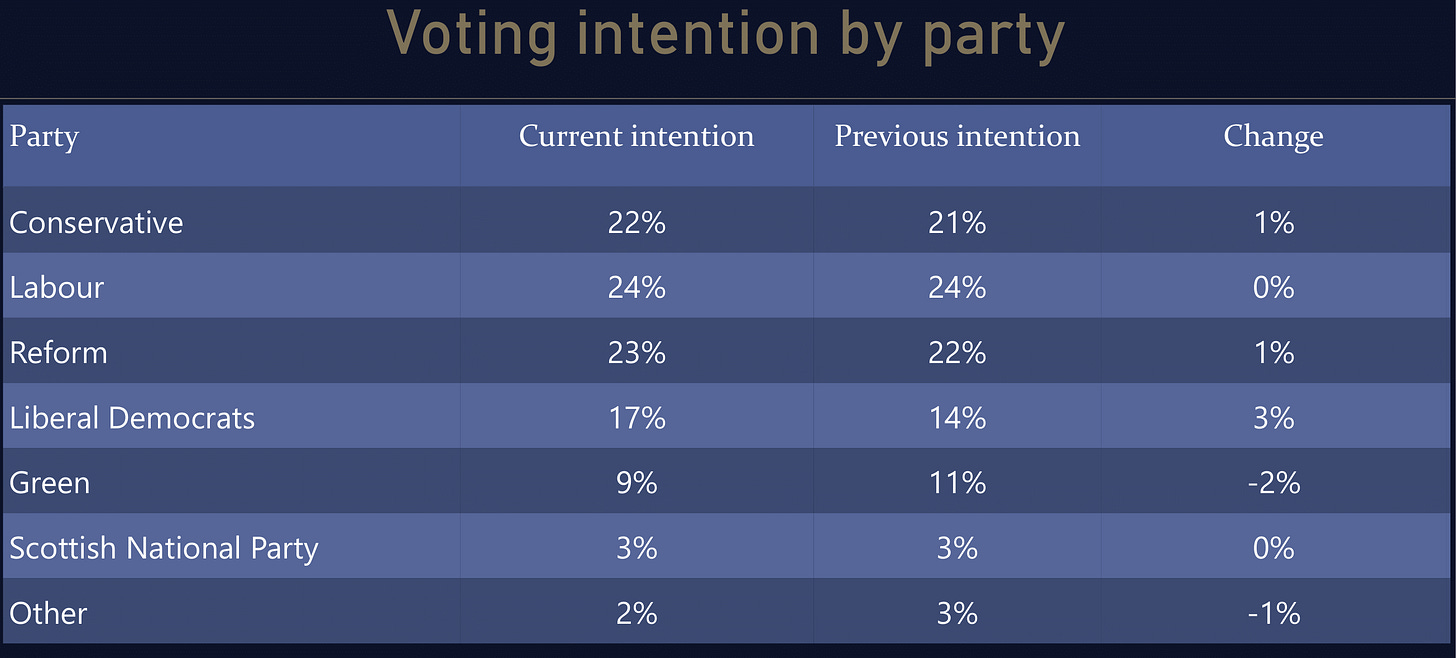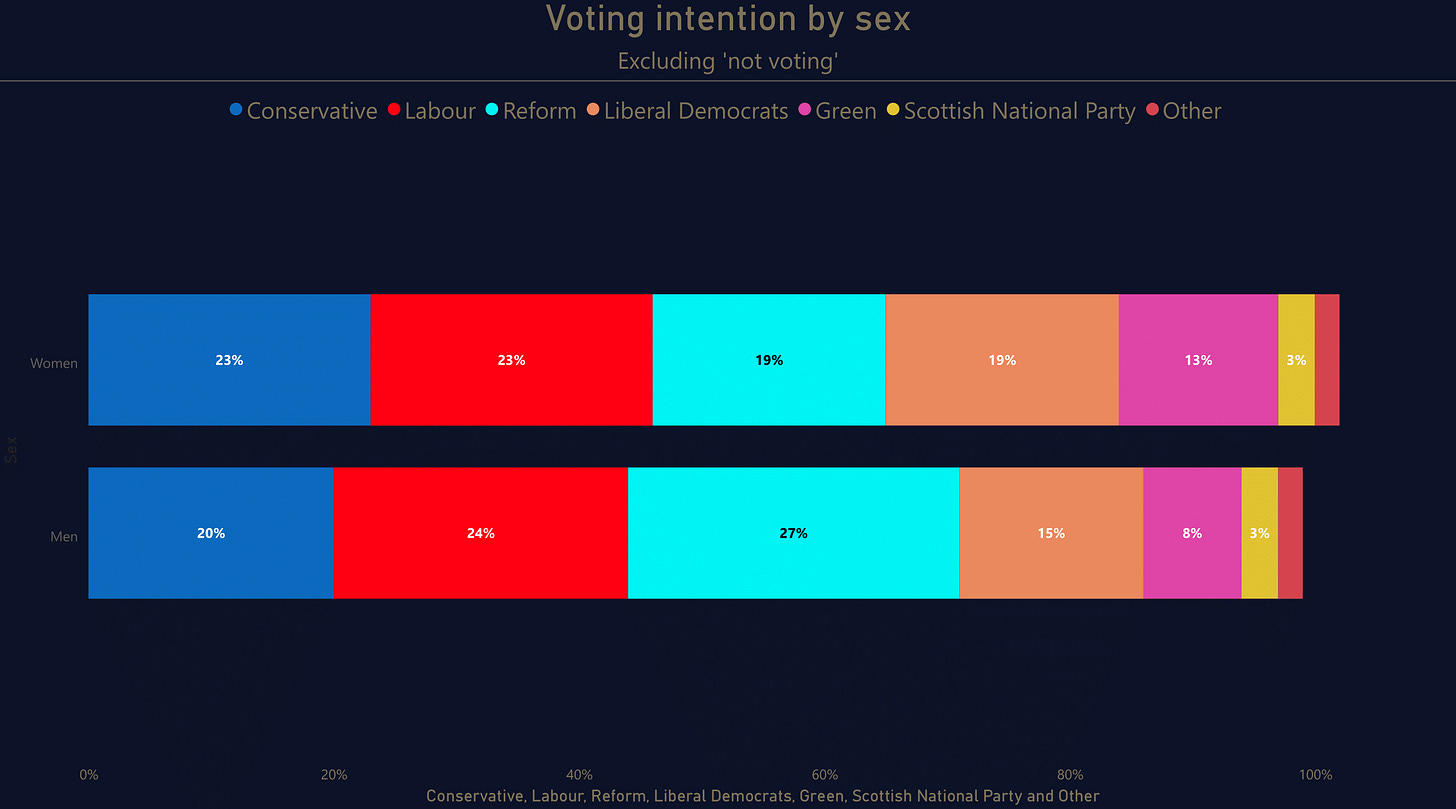Pollster: YouGov
Sample size: 1,775
Fieldwork dates: 7th April 2025
Source
Key points
Reform’s high levels of support in the Midlands and North is challenging both conservative heartlands and recent 2019 victories.
The gender gap is widening, and consistently, at each end of the political spectrum.
The Liberal Democrat support seems to be broad but shallow - not far from where UKIP was in the mid-2010s.
Compared to the last YouGov poll, the right-leaning parties (Conservatives and Reform) have gained ground, while the Tories continue to lag behind Reform, especially in core demographic constituencies, including in the Midlands and amongst younger voters (see below).
The most movement, however, seems to be on the Left, as the Greens dip and the Liberal Democrats pick up. But, given that these parties usually sit either side of Labour, there could be a ‘travelling’ phenomenon going on, where Left-wing voters shift from the Greens to Labour, and moderate-Left voters shift from Labour to the Lib Dems.
What would this parliament look like?
Using Electoral Calculus, this would be the number of seats each party would take:
The tale of the three lead parties is well-told by now, but the most interesting part of all of this is in the Liberal Democrats’ level of support not translating into seats as well as other parties. In fact, as the United Kingdom Independence Party (UKIP) continually found in the mid-2010s, hovering between 14% and 18% can usually be a consequence of broad but shallow support.
This may mean that, while the Lib Dems hoover up the more moderate Labour voters and the disillusioned Tories, they may do so in seats that are historically safe, and so only shrink majorities rather than stealing them.
Both of these key points - of the Lib Dems having shallow but broad support, and the Conservatives lagging behind Reform - bear out in the regional data. Reform are outperforming the Tories in both historically conservative areas (the Midlands) and the places the Tories flipped in 2019 (the North). Likewise, Reform are polling high in both Scotland (at fourth place) and Wales (topping the polls); in Scotland, this could translate to a complete SNP dominance, as the unionist vote splits irrevocably, and the SNP come through the middle.
Meanwhile, the Lib Dems are polling very well in the Conservative heartlands of the South - so much so that South of London is now very much a three-horse race between the Tories, Lib Dems and Reform. However, the reason the overall high level of support for the Lib Dems would not translate into seats is the regionally low level polling in other English regions.
Reform continues to outperform the Tories in the youngest age groups, and continue to poll the highest amongst 50-64 year olds at 26% - but this has dropped dramatically from 34% in the previous round (and the height of support in this group).
The emerging gender gap is increasingly fascinating, with the two traditional parties of the Tories and Labour holding parity levels of support between men and women, while Reform is polling nearly 10% higher amongst men than women, while the Lib Dems and Greens are polling much better amongst women than men. It puts in question the ongoing claim that the approaches adopted by the Left towards the gender issue is alienating women; in fact, the exact opposite may well be happening.
Thank you for reading this short Poll Watch post, in which I look at and discuss the most recent public opinion survey. Please consider subscribing to and sharing this blog and, if you’re feeling particularly generous, subscribing to my paid content -(detailed research and policy proposals).







